 |
  |
 |
  |
Guru Gopinath and Kerala Natanam - G. Venu e-mail: abhinayakairali@gmail.com Photos courtesy: G. Venu August 28, 2020 (The author, a Kutiyattam artiste, who had also received training in dance under Guru Gopinath for five years during 1963 - 1967, pays homage to his Guru in the background of that experience.) Guru Gopinath and his wife Thankamani are dazzling artistes who shone upon the 20th century history of Kathakali, Mohiniyattam and Contemporary Dance. I had joined as a student under Guru Gopinath after he opened Viswa Kala Kendra at Vattiyoorkavu in Thiruvananthapuram in 1963. At that time he was the most well known dancer of Kerala. The newspapers and other journals of the day gave a lot of coverage to his performances both in India and abroad. I had become an ardent devotee of Guru Gopinath after seeing the photographs of his Navarasa-s that was published in a magazine. The expressions that unfolded upon his perfect dancer's face always held a unique charisma and radiance. Born into the rich heritage of Kathakali in Kuttanad, a treasure house of performing art forms in southern Kerala, Gopinathan had received training in Kathakali under stalwarts like Chambakulam Paramu Pillai, Mathoor Kunjupillai Paniker, Guru Kunchu Kurup and Chengannur Raman Pillai for seven or eight years before joining Kerala Kalamandalam. He belonged to the first batch of students at Kalamandalam which was opened by the great poet Vallathol Narayana Menon in 1930. His class mates included Krishnan Nair (later, Kalamandalam Krishnan Nair), Sivaraman (Ananda Sivaram), Madhavan (Kalamandalam Madhavan) and Kelu Nair. Great artistes like Guru Kunchu Kurup, Pattikkamthodi Ravunni Menon and Vellinezhi Nanu Nair were among the teachers at Kalamandalam then. Gopinathan, however, joined the American dancer Ragini Devi to form a new dance troupe, with the permission of Vallathol. Ragini Devi had visited Kalamandalam at that time. It later proved to be a great turning point in the history of Kerala's dance forms. 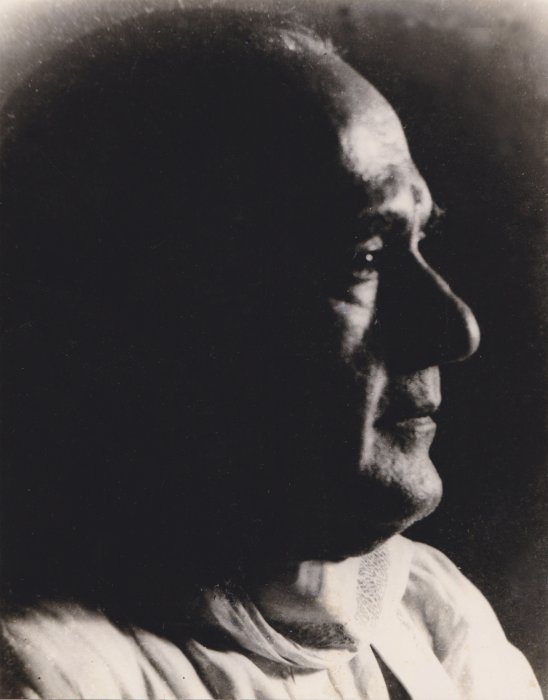 Guru Gopinath (1965) Photo: Chittore Gopalan Nair Ragini Devi had emerged from the background that of American modern dancers including Ruth St. Denis had started experimenting with Indian dance forms, trying to incorporate the Oriental philosophies with the Western dance idioms, christening it as 'Nautch.' Harindranath Chattopadhyay, the great poet, dramatist and actor, had met Ragini Devi during one of his American tours. He invited Ragini Devi to India to learn the Indian dance forms. It was Kamaladevi Chattopadhyay, the great cultural personality and wife of Harindranath, who made arrangements for Ragini Devi who embarked in Chennai to learn the south Indian dance forms. She assigned Venkatachalam, an art scholar and friend, with this task. At that time, the dance form of 'Bharatanatyam' had not yet been evolved. Dance was known under the names of Dasiyattam or Sadir. And there were no institutions that taught dance in Tamil Nadu. Ragini Devi obtained a short term training in dance from a Devadasi in Madurai or some other place. Venkatachalam brought her to Kalamandalam in 1931 from where she started training in Kathakali. The initial works of the dance troupe was held in Bombay. Their aim was to create a new form of creative dance that was different from Kathakali, in which they had received training. Ragini Devi and Gopinathan put their heads together and many new dance items started to take form, performed to the accompaniment of different music instruments like tabla, maddalam, chenda and sarangi among many others. However, Kathakali remained as the major influence in all the dances that were born during that period, like Siva Parvathy, Lakshmi Narayana Nritham, Garuda Nritham, Veda Nritham etc. A young man like Gopinath who was born and raised amidst the extremely conservative social and cultural landscape of Kuttanad was able to engage himself in such novel creative work only because of the artistic soul he possessed. "This was the period in my life that I had enjoyed most, and understood the meaning of creative freedom," Guru Gopinath said once. All these items were lauded by the audience at the premiering held at Royal Opera House in Bombay during December 12-13, 1931. Later, all these dances went on a highly successful all India tour. After a show held in the presence of Rabindranath Tagore, the great poet presented a poem written in appreciation of the performance. 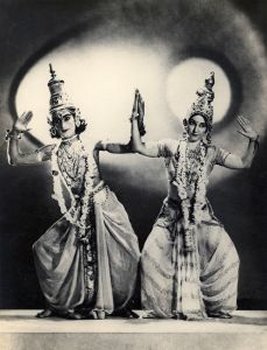 Gopinath and Ragini Devi in Lakshmi Narayana Nritham (1931) Even though the performances had met with huge success, Ragini Devi could not sustain the troupe for long. Gopinathan returned home. Mukunda Raja assigned him with the task of forming a dance troupe at the Kerala Kalamandalam. At that time, there was only one student, Thankamani, who received training under Kalyani Amma in Mohiniyattam. Gopinathan's decision to make Thankamani his co-dancer was in disagreement with the strict discipline of Kalamandalam. However, Mukunda Raja intervened in the matter and shortly Gopinathan and Thankamani got married. Pooradam Thirunal Sethu Lakshmi Bayi, Amma Maharani of Travancore, had once enjoyed the dance performance given by Gopinathan and Ragini Devi in Kolkata. After learning that Gopinathan had returned to Kerala, she invited him for a dance recital at Kowdiar Palace, the official residence of the royal family of Travancore. When Gopinathan visited, the Amma Maharani asked him if he could present a dance which had never been performed before. The queen was a great connoisseur of all art forms with deep knowledge in many subjects. Her demand was made in a period when no one had hardly thought about creative endeavours in an art form like dance. She also promised Gopinathan all the assistance that he needed for creating a new dance. The help of Lakshmanan Pillai Bhagavathar, who was the Principal of Swathi Thirunal Sangeetha Vidyalayam for vocal accompaniment was assured, along with the support of an Englishman who was the principal at the Engineering College for providing stage lighting. The famed art scholar G.P. Sekhar was given the task of general coordination. Gopinathan immersed himself in meditative contemplation for almost one week. During that period, a peacock appeared in his dreams and the choreography was centered on that peacock. He designed the costumes and ornaments by himself and set about practicing the dance. The dance was performed in front of an erudite audience including foreigners. It was an open stage. The music was evocative of the peacock's dance. Slowly, a leg of the peacock was visible. A cool breeze broke out, with a sprinkling of light drizzle. No one had expected such a sudden change in the weather. A huge ovation rose at the end of the dance. The next day, he got a message from the palace through G.P. Sekhar - Gopinathan to be awarded the Veerasrinkhala. It was the highest honour to be bestowed by the royal family. That created a huge uproar, as the Veerasrinkhala was usually bestowed upon only senior artistes who had proved their excellence in their genre. Gopinathan, trained as a Kathakali artiste by stalwarts like Guru Kunchu Kurup, Pattikkamthodi Ravunni Menon, Chengannur Raman Pillai and Thottam Sankaran Namboothiri who were the stellar performers of that age, had received the award just at the age of 25 years! He won that honour by daring to travel down the road of creativity that was unique and different. 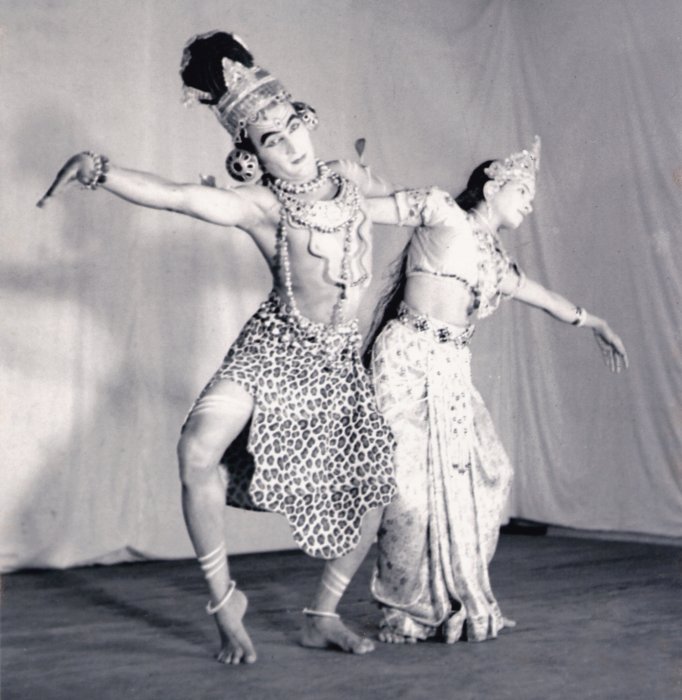 Gopinath in Ardhanareeshwara Nritham at the Sree Chithrodaya Narthakalayam 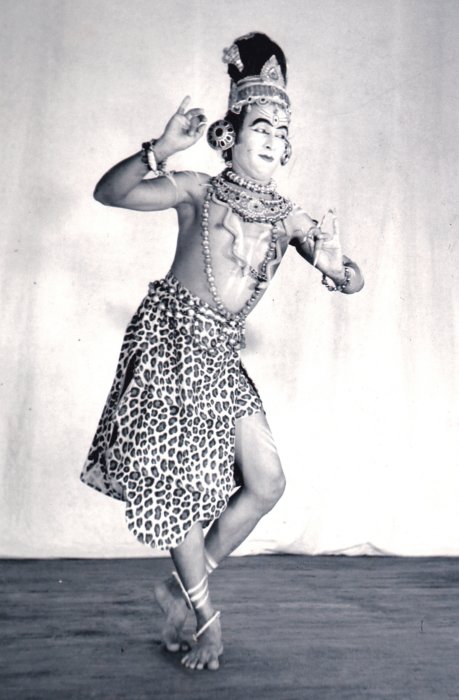
Soon, an institution for dance named, 'Sree Chithrodaya Narthakalayam,' was started under the direct patronage and supervision of the Travancore royal family. Gopinathan was appointed as the head of that institution. Gopinathan, the great dancer, rose to the occasion and made the best use of the responsibility that was given to him. The purity and integrity of the life style that he formulated during that period was preserved till the end of his days. A high level of moral values was the supreme most of his principles, along with ardent training and honesty. He even derived a unique style of dressing for himself. The large number of students, especially girls from aristocratic families of Thiruvananthapuram who started to learn dance at Sree Chithrodaya Narthakalayam could be seen as one of his biggest achievements. Parents who never even dreamt of sending their children to learn dance came forward eagerly to send their wards to the dance school. Among his illustrious disciples from that period are the sisters, Lalitha and Padmini duo, who made their names both as dancers and film actors. The fabulous careers of these artistes who had carved out niches for themselves in both dance and acting at the national level after receiving the basic training from Gopinath and Thankamani are astonishing. Among the artistes who shot into stardom after receiving their training from Narthakalayam include Chandrasekharan Nair (Guru Chandrasekhar), Prof. Sankarankutty and Balakrishna Menon (Rabindra Bharati). After one decade, Gopinathan left Narthakalayam following some differences of opinion with the royal family. Afterwards, he moved to Madras. Soon, the art world of Madras and Tamil Nadu welcomes Gopinath and Thankamani with open hands. Numerous performances and dozens of disciples happened there. The leading disciples from that period include the renowned performers like Gopalakrishnan (Guru Gopalakrishnan), dancer Thankappan, Bhaskar and Chithrasena (Sri Lanka). He evolved a unique genre of dance, created a complete training methodology for it and trained many dancers under that system. As he had often pointed out, Guru Gopinath's vision of dance aimed at steering clear of repetition and monotony. My father, who had a close acquaintance with Guru Gopinath, used to say that the way he maintained his unique and principled personality itself was worthy of emulating, even more than his contributions as an artiste. I had decided to train under Guru Gopinath after learning Kathakali under Guru Keerikkat Sankara Pillai for three years. The Kalari (training centre) that he started at Vattiyoorkavu followed almost a Gurukula style of teaching. "I want to teach the Thekkan Chitta (Southern School) of Kathakali which I'd learnt in its authentic style. I have only studied that style. It was from that style that I took whatever techniques I needed for the dance forms. Learning only the dance forms that I created will lead to a depreciation of values," he used to say. He owned around 16 acres of land at Vattiyoorkavu where he built Kalari-s for the classes. In the beginning, there was only Guruji to train us. He would reach the kalari at 4.30 every morning. And he would train us in the physical exercises, steps and kalasa-s from the Kaplingadan chitta of Kathakali that he had learnt. Guruji used to say that he was following the school of Mathoor Kunjupillai Panikker Asan, the great master of Southern School of Kathakali. After a few months, Keerikkat Sankara Pillai was appointed as an Asan (master). Thakazhi Madhava Kurup and Madavoor Vasu Pillai used to come for the vocal support. During the periods of 'uzhichil,' the special massage for Kathakali students, Guruji would also join for giving us the massage. Slowly we started the cholliyattam (training) of Kathakali plays like Rukmini Swayamvaram, Kalyanasaugandhikam, Dakshayagaam and Nalacharitham (Day 1). Learning became an exciting process. As an enthusiastic student, Guruji made me perform the 'cholliyattam' every day. The cholliyattam which started at 9 in the morning would last for two hours. Guruji used to teach us all the concepts behind each and every mudra, bhava and movement. He taught me almost for six months, a single padam (verse) beginning 'Kanninakkanandam...' from Dakshayagam. He used to add subtle changes every day, which were inspired both by traditional knowledge as well as his own creativity. The way he taught me the lines, 'Pulinangal thannil nalla kalahamsa leela kandu....' (I saw the swans playing around in the ponds) was quite astounding. He taught me a myriad number of ways in which the scene could be described and taught me the various flights and actions of the swans. He used to say that each bird had different actions and that the actors need to closely observe different kinds of birds and their activities. 'Mayoora Nritham,' the famous peacock dance that he designed, was born out of this close observation of the birds that he used to practice.  Venu G. during his training period in Guru Gopinath's kalari (1968) My training under Guruji lasted for five years. Those were the days when his schedule was less tight. He was always happy to teach for any lengths of time if the disciple had enough enthusiasm to learn. He would make me repeat each portion till he felt satisfied. He was ready to demonstrate each part any number of times. But if it was not assimilated completely by the next day, severe scolding would follow. Sometimes, he also used to hit the students. The students from his earlier days used to say that each of those punishments later turned to gold. He never used to stop the classes for any guest, however special they might be. Guruji used to analyse each of the acting techniques with a research oriented mind. It was he who took 'Hasthalakshanadeepika,' the treatise on mudra-s (hand gestures) to the common people. Guruji had said that it was the great scholar Kuttikrishna Marar who had taught him 'Hasthalakshanadeepika,' at Kerala Kalamandalam. He has included relevant portions of the Hasthalakshanadeepika in both English and Malayalam, accompanied by attractive illustration in his own books, 'Abhinayankuram,' 'Abhinaya Prakashika,' and 'Kathakali Natanam.' It was my training under Guruji that opened up the infinite possibilities of the mudra-s of Kathakali. I started to think ardently about formulating some kind of system for documenting this rare branch of knowledge that had survived through the oral tradition. Slowly, a notation system for the mudra-s started to evolve in my mind. Then, I started documenting the mudra-s in the notation system that I evolved and the first person with whom I shared this discovery was none other than Guruji. The first part of 20th century had seen a rich period for Kathakali, enhanced by the presence of exemplary performers, but the renown of this great art form was confined within the four boundaries of Kerala. And Mohiniyattam, the lasya dance form that was indigenous to Kerala, had become almost extinct during that period mainly due to the degeneration that happened to Dasiyattam and other related lasya dance forms of India. Even a complete extinction of that dance form through enactment of some legislation was desired by many people. On the other hand, the English-educated and emancipated elite class of India had started to engender a total contempt towards our own cultural heritage and towards local art forms. This contempt was a direct result of the cultural decline created by centuries of British rule. This was the actual status of these art forms when Vallathol Narayana Menon founded the Kerala Kalamandalam. Seven decades later, a truthful appraisal of the developments that had led to the international acclaim won by these art forms, we can never afford to forget about the lives of Guru Gopinath and Thankamani, dedicated to the art. Guru Gopinath was the first ever artiste who drew the attention of a global connoisseurship towards Kathakali through his creative experiments that took shape from the firm foundation created through long years of arduous training. His contributions are not just limited to helping Kathakali win international appreciation in its own original format later, but also in initiating the daring experiments of contemporary dance in our country. FORGETTING TO HONOUR THE FIRST FEMALE DANCER Thankamani, born in a respectable family, was a dancer who came forward to learn Mohiniyattam which was discarded by the traditional dancers of that era. She dared to enroll herself as the first student at Kerala Kalamandalam as the disciple of Orikkaledathu Kalyani Amma. Her biggest contribution was turning dance into a respectable field of art pursuit and dedicated practice, thus paving the way for many girls to enter the profession of dance. 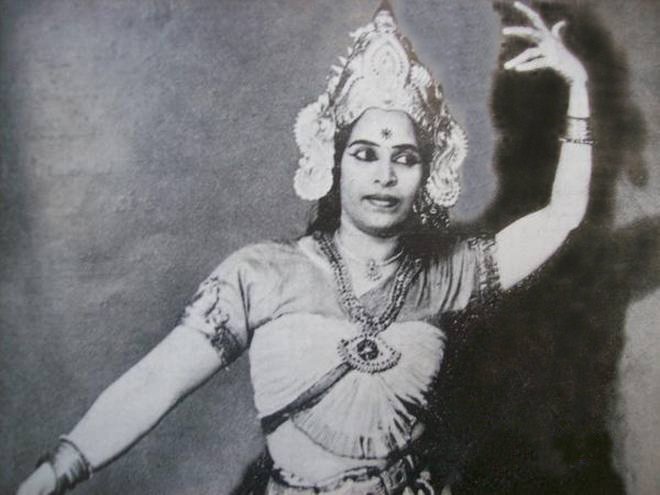 Thankamani Gopinath Having entered the professional dance scene in 1937, Thankamani continued her active presence in the field till 1960. Gopinath and Thankamani were perhaps the first Indian dance couple since Uday Shankar and Amala Shankar. According to the reputed dancer Ananda Shivaram, the great Australian dancer Louis Lightfoot had once compared Thankamani with Anna Pavlova, the Russian prima ballerina. "Her hands excel that of Anna Pavlova," were Louis Lightfoot's words. Thankamani was also a great teacher of dance. Her students at both the Sree Chithrodaya Narthakalayam in Thiruvananthapuram and Natana Nikethanam in Madras later became famed dancers. However, it is a shocking and sad reality that the artistic world of Kerala has totally forgotten to honour this first ever female dancer from Kerala Kalamandalam. She remained a silent witness to many artistes who came up after her, including her own disciples being honoured and felicitated with awards and many other honours. She was also ignored when the Kerala Kalamandalam celebrated its Silver Jubilee and Golden Jubilee. She was not selected even for an ordinary award of the Kerala Sangeetha Nataka Akademi. Even the central Sangeet Natak Akademi at New Delhi forgot her. Why did this happen? Unfortunately, none of our cultural institutions have a system in place for recognising and learning about important personalities in each art form and honouring their contributions. The members of the committees of these institutions only strive to obtain the honours for their personal acquaintances. Thankamani Chechi (elder sister, as she was fondly addressed) was a rare personality who maintained her nobility throughout her career in art. She used to avoid such discussions involving her even during the daily life. PADMINI, THE ILLUSTRIOUS DANCER Padmini, one of the reputed Travancore Sisters was a rare genius who had started learning dance under Guru Gopinath, and later moved on to create a wonderful career through her own experience as well as from the advanced training under various masters of dance. The growth of Padmini as a dancer had happened in a natural flow, above all the various schools of dancing. It is true that the perfection that Padmini could achieve in her expressions as well as in her gestures and movement, rising above all the schools of training she had undergone was something that very few dancers in India could achieve. Padmini had the rare fortune to obtain continuous practice and stage experience from the age of five till she left the stage. She had started learning Bharatanatyam under a Nattuvan even while being the disciple of Guruji. She got the biggest recognition for a 14-year-old dancer in the form of a chance to act in the dance film 'Kalpana,' made by the great Uday Shankar. It was during this period that she got the opportunity to receive the legendary physical training given by Uday Shankar. This experience later helped her a lot in assimilating the movements choreographed by any choreographer in the films. Padmini had also got the opportunity to receive training under Kalamandalam Madhavan, the great dancer who had even struck Uday Shankar himself with awe. Those days, the dance choreographers of Hindi and Tamil film industries were well-trained in classical dance forms. Padmini had danced in major Indian films. Hence, obtaining copies of those films is not a difficult task. It was only Padmini who had reached the pinnacle of the form of dance that Guru Gopinath had visualised. KERALA NATANAM Guru Gopinath had created a new form of dance after being trained in Kathakali under great masters for twelve years. In the beginning, he used to present this new style of dance as 'Kathakali' itself. However, following his own guru Kunchu Kurup expressing his opinion that as the new dance form could not be termed as 'Kathakali,' as it digressed considerably from the traditional Kathakali, Guru Gopinath started referring to his dance form as just Classical Dance. However, he was thinking seriously about coining a new name for his novel form of dance. Two names, 'Nataka Natanam,' and 'Kerala Natanam' were under consideration. The term, 'Nataka Natanam,' was coined from a reference found in a poem written by Kunchan Nambiar to be performed as Ottan Thullal. It meant a theatrical performance through 'Natanam,' which was a blend of Nritta, Nritya and Natya. In the book, 'Jeevitha Smaranakal,' (Memories of a Life), he refers to his style of dance as 'Nataka Natanam.' These days, the dance style evolved by Guru Gopinath is known as 'Kerala Natanam.' However, with Kerala Natanam being inducted as an item for the State Schools Kalotsavam, it has sadly degenerated into another item for competition. The dance compositions created by the pioneers of 20th century modern dance like Ruth St. Denis, Anna Pavlova, Nijinski, Uday Shankar, Madam Menaka or Ram Gopal are never repeated by anyone. The dance compositions of Guru Gopinath also fall under this category. In case these compositions are ever performed again by anyone, it will be only as part of research and studies. The creative experiments should always remain 'contemporary.' And contemporary dance is quite alive in India today. Kerala Natanam should have a foundation of a training of at least six years in the techniques of classical dances like Kathakali and Mohiniyattam along with Yoga, Kalarippayattu and elements of the folk ritual art forms of Kerala. Along with that, the syllabus evolved by Guru Gopinath during different periods and other experiments that happened in creative dance should also be taught. The students should also be given the opportunity to familiarise themselves with other subjects like music, literature as well as the Indian Dance Science and aesthetics from Natyasastra onwards. If the new generation of dancers are given a foundation in all this, they will be able to evolve works on their own reflecting the ethos of contemporary times. The Guru Gopinath Natanagramam, under the Department of Culture of the Govt. of Kerala has the responsibility to create such an opportunity. In his autobiography titled 'Ente Jeevitha Smaranakal,' Guruji reminisces about having trained around 1,500 disciples during the period between 1931 and 1983, at various places including Bombay, Thiruvananthapuram, Madras, Delhi and Ernakulam. I feel proud that he has included my name in a special list of eleven that include Lalitha, Padmini, Yamini Krishnamurthy and Padma Subrahmanyam. He had formulated a teaching methodology for me during the last phase of his dynamic life in the arts, drawing upon all of his myriad experiences. REMEMBERING GURU GOPINATH The five years (1963 - 1967) during which I got the opportunity to have a close interaction with Guruji are unforgettable in my life. When I first met him, Guruji resembled a Kuttanadan farmer, happy and contented amidst the lush vegetation grown by him. The sixteen acres of land he possessed was covered with coconut palms, fruit trees of many kinds with tapioca planted among them and a huge cattle shed housing four or five cows. He used to say, "I want to combine both my art and my farming." From the time I became part of Viswa Kala Kendra as his disciple, I got many opportunities to travel with him. Guruji's Navarasabhinaya, followed by the performance of Chandrasekharan Nair and Prof. Sankarankutty who were disciples were the main programmes scheduled for the inauguration of Jawahar Bala Bhavan at Thiruvananthapuram. Poet Sugatha Kumari was the director of Bala Bhavan at that time. Chandrasekharan Nair presented the story of a sculptor and Sankarankutty chettan performed the dance item 'Vamana Mahabali.' During our return journey by car, Guruji asked me which performance I liked better. Even before I could reply, he said, "I liked Appukuttan's (Chandrasekharan Nair) sculptor. Kuttappan (Sankarankutty) has just copied what I had taught him. There is no novelty in his performance." He was teaching me about his own concept about the art of dance. 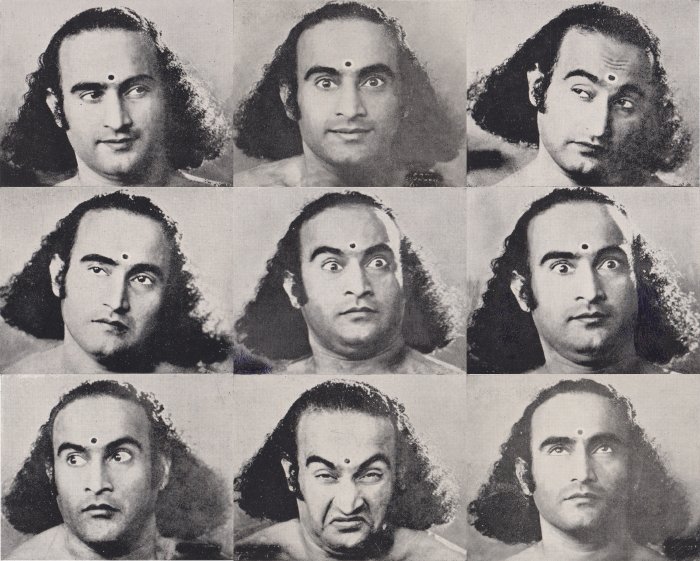 Navarasas demonstrated by Guru Gopinath. In 1954 when he presented Navarasa Abhinaya at the Bolshoi Theatre in Moscow, the music was provided by Pandit Ravi Shankar When I travelled to Madras for the interview of the Cultural Ministry's scholarship, I had stayed at Guruji's residence at Gopalapuram. The stardom of Guru Gopinath extended beyond Madras to all over Tamil Nadu. Many of his disciples had become renowned dancers by that time. I visited dancer Thankappan at his home. At that time, Thankappan Master was the renowned dance choreographer of the whole Indian film industry. "I was mere newspaper boy, who travelled to Madras with the ambition of making it to the films. Then, I became the disciple of Gopi chettan while working in the kitchen of a hotel for sustenance. Another young artiste who was working in the hotel with me was Krishnan Namboothiri (He later became the teacher at School of Drama, Thrissur). All of us may be making more financial income from dance than Gopi chettan. But his personality, the respect he wins from the public - all this could never be bought for money. All those who studied under him, listening to his scolding and bearing his admonishments, later reached the heights of fame. There was never another Guru who exalts so much upon the rise of his disciples," said Thankappan chettan. Gopalakrishnan chettan (Guru Gopalakrishnan), another one of his dearest disciples, has said, "The advice given by Gopi chettan on many occasions about the need to preserve strict discipline not only in my art, but in personal life also, had come as a great blessing." Bhaskar, who had built a huge empire of dance itself in Singapore, always believed that all his achievements were made possible only because of Guruji's blessings. He even conducted a great ceremony of 'Paada Pooja' (Worshipping at the Feet), honoring Guruji in Singapore with much pomp and splendour. It was in Delhi that I got the rare fortune to stay with Guruji. He asked me to accompany him during his Delhi trip for directing the 'Ramlila' ballet for Bharatiya Kala Kendra, New Delhi. As I was a scholarship student at that time, he insisted on never breaking my daily practice. That was the reason for him inviting me on that tour. We were staying at the Bharatiya Kala Kendra Guest House at Mata Sundari Road. Guruji would wake up at 4 a.m. every day. Then he would step outside, wearing a red silk dhoti and carrying a small flower basket which he always kept with him. Sometimes, he would have to walk for some distance for collecting the flowers he needed for his daily puja. Guruji in his red silk dhoti, collecting flowers in his basket, looked like some holy sage. After collecting the flowers, he would decorate the locket of Devi Mookambika that he used to wear on his neck, with the flowers and go for his bath. After finishing the bath, he would sit down for his puja. During the puja, he would chant the mantra-s quite loudly. By the time the puja was over, some of the disciples would arrive with his breakfast. Sekharan and Kannan, who were part of the 'Ramlila' troupe were living in the quarters with their families. Mostly they would arrange Guruji's breakfast. I would also get my share. After breakfast, he would teach me for one hour. After that, he would start working on the songs that had to be added to the Ramlila during the day's rehearsals. The vaithari-s of the movements would be choreographed. The vaithari-s often followed the discipline of Kathakali, yet they were mostly independent creations. He never cared for the stringent frameworks of tradition. By ten o'clock, he would reach the Ramlila rehearsal hall. The troupe for performing Thulasidasa Ramayanam included around sixty performers and more than one dozen musicians. The Ramlila which was popular in north India was different from Nautanki. Based on the Indian traditions of performing arts, Ramlila was a blend of music and dance. Guru Gopinath was invited as the choreographer for Ramlila after stalwarts like Devendra Sankar and Narendra Sarma. I got the opportunity to accompany him during his third year of choreographing Ramlila. Bharatiya Kala Kendra was run by the erstwhile DCM Shriram group, one of the leading industrial houses of the time. Sumitra Charat Ram was in charge of running Kala Kendra at that time. Sumitraji used to visit the rehearsal space occasionally to watch the progress of the work. But she would never enter the rehearsal hall, preferring to watch from outside. No amount of persuasion could make her step inside the hall and take a seat. The reason was that Guruji used to remain standing throughout his rehearsals. He would sit down only during the breaks. Guruji's only addiction was smoking. He used to smoke an occasional Panama cigarette. Never did he consume alcohol. When vodka was served during a Russian tour, he just tasted it once, following the urge made by Pandit Ravi Shankar who was seated next to him. But later, he never succumbed even to such temptations. Sekhar Paniker, one of Guruji's disciples, once arrived at Vattiyoorkavu to discuss a new project. He was the choreographer at Bharatiya Kala Kendra in Delhi at that time. The project was to film the famed dance items choreographed by Guruji including his earlier works done with Ragini Devi like Lakshmi Narayana Nritham and Siva Thandava, along with the later works done in Sree Chithrodayam Narthakalayam, Kerala and Natana Nikethanam of Madras after producing the works again. He had arrived with the aim of preparing the project and budget. But, Guruji did not support the project. "Each of these works was created at a particular moment in time, according to the circumstances that prevailed and the colleagues who were around at that time. There is neither any relevance nor any usefulness in repeating those works. In case these works were documented at the time of their creation, that would have been meaningful" - this was his response. The grave misunderstanding that 'Kerala Natanam,' is a form that consists only of the items of dance choreographed and taught by Guru Gopinath is still prevailing, especially in the functioning of the Guru Gopinath Natanagramam. Ragini Devi was the first co-dancer of Guru Gopinath. The initial form of Kerala Natanam was born out of a creative merger of Ragini Devi's skill in dance with the excellent training in Kathakali displayed by Gopinath, the young Kathakali performer. During the second stage of this dance style, Gopinath's wife Thankamani was his co-dancer. Besides, the advice and comments provided by the members of Travancore royal family, especially that of Amma Maharani, had also played a significant role in enhancing the artistic merit of the dance form. His disciples from that period, who included Kesavadas, Sankarankutty, Chandrasekharan, Chellappan, Bhavani, Padmini, Lalitha and Balakrishna Menon were extremely talented artistes. The items choreographed during that period like Githopadesham had maintained a high standard of artistic excellence. The maddalam artiste Sankara Kurup who was his constant companion in those days, had told me once - "When he sets out to design a new item, Gopi chettan would literally lose his sleep. During the days of choreographing Githopadesham, he would often wake me up at midnight to discuss some idea that crossed his mind at that moment. Krishna was performed by Gopi chettan himself with Arjuna by Kesavadas. Besides the instruments like maddalam, thimila and edakka, a set of horse bells tied to a string were also used for accompaniment." The great dancer Uday Shankar, who had watched this item sitting in the front row, had once said that the audience could get a feel of the chariot wheels rolling on the stage. Guruji had later told me that he had never again got the kind of concentration he could get during those days. While he was at Natana Nikethanam in Madras, the very existence of the troupe had depended upon programmes. During that period, he had created items in Tamil also. He had spent much time in travelling all over Tamil Nadu with programmes so that the troupe could be sustained. When starting Viswa Kala Kendra at Vattiyoorkavu, Guruji had dreamt of having separate kalari-s teaching different dance forms from all over India. He wanted each kalari to follow the respective local style and to have separate gurus to teach the dance forms like Mohiniyattam, Bharatanatyam, Kathakali, Manipuri and Kathak. He had envisioned that the new styles of dance should emerge out of the new generations of artistes who would be trained in a multitude of dance forms. I have often listened to him commending Padmini who started from his training and later obtained excellence in different dance forms from all over India. It was not Guru Gopinath who gave the name of Kerala Natanam to the dance style that he had evolved. 'Kerala Natanam' was first used when a name was required for the training programme led by Guruji's disciple Prof. Shankarankutty, conducted at Swathi Thirunal Music Academy in Thiruvananthapuram which was a continuation of the Sree Chithrodaya Narthakalayam. Later Guruji gave his acknowledgement to the name. Kerala Sangeetha Nataka Akademi had organised a dance workshop for the first time in 1977. It was a period when the mega dances like Ramayanam and Narayaneeyam choreographed by Guru Gopinath, as well as other dance dramas like 'Chithrangada,' 'Karnan' and 'Chandala Bhikshuki,' choreographed by Guruji's leading disciple Guru Chandrasekharan Nair, the compositions from Kottayam Chellappan- Bhavani duo and the popular dances presented by Kalamandalam Gangadharan were being performed all over Kerala. The workshop was planned at a time when Prof. G. Sankara Pillai was the chairman of the Kerala Sangeetha Nataka Akademi. I was entrusted with the task of presenting the draft outline of the workshop at the organising committee meeting held at C.P. Sathram at Thiruvananthapuram, chaired by Sankara Pillai. The workshop was designed by incorporating all classical dance forms and giving importance to the creative elements in the dance. Guru Gopinath was the workshop director. I was also one of the three assistant directors along with Guru Chandrasekhar and Kalamandalam Gangadharan. The three week long workshop was attended by 19 young dancers. It was at this workshop that the dancing community came to an understanding to call Kerala's creative dance as Kerala Natanam. It was in this background that Kerala Natanam got inducted into the list of competition items for the State Schools Kalotsavam (Youth Festival). I was shocked to learn that the guidelines for this dance form for the State Kalotsavam were created by an IAS officer who handled that section. I came to learn about this from that officer himself. Kerala Natanam, which got constrained within a set of very much limiting costumes and subjects, still has not able to break free from those confines. These guidelines for Kerala Natanam created for the State Schools Kalotsavam is, unfortunately, the biggest injustice that is being meted out to the great artiste, Guru Gopinath who had never wished to keep any of his creations within any framework and who never wished to repeat any one of his own creations. 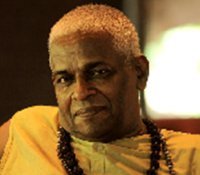 G. Venu is a performer, researcher and has invented a dance notation system for delineating mudras in dance and theatre in Kerala. He has also devised 'Navarasa Sadhana' module as a transformative process for artistes seeking a deeper insight to the depths and diversity of human emotions. He is the Chairman, Natanakairali, Ammannur Chakyar Madhom, Irinjalakuda, Kerala. Comments * It was so wonderful reading the article ‘Guru Gopinath and Kerala Natanam’ by G. Venu. I have the humble honour of referring to Guru Gopinath as my grand Guru. My mother Kathiyayini Natesan is my first guru and hers was Guruji himself. During her childhood years she had the amazing opportunity to learn Kerala Nataman from the creator of the beautiful style and that too in the ‘Gurukulam’ system of art education. Though she had to discontinue classes later (due to academic reasons and having had to move cities), the strong foundation and discipline that was instilled in her was directly transferred to me. She has fondly narrated many tales from her days of training at the Master’s Gurukulam. Master would apparently ask any student seeking admission to first walk around a few times and just by observing their gait he would assess if dance education would suit them or not. He was also a staunch devotee of Devi Mookambikai and would offer his prayers every single day without fail, even if he was traveling. She often recalls having been a part of these festive pooja preparations along with learning to dance. Gurumaatha Thankamani who was Guruji's wife and co-dancer is supposed to have been an exceptionally beautiful woman with her luxuriant tresses flowing till the knees. Having been the first woman to have joined the Kalamandalam, she was an extraordinary artist. My interest in dance dramas was inherited from my mother who in turn was very passionate about them and must have developed it from the great master. The best memory of hers however is that of her joining day - Master had casually asked her to sit in araimandi and gone away to complete some chores he had. He returned only after a considerable amount of time had passed and my mother had stayed in that same araimandi position, rooted to the spot, drenched in sweat and had not dared to move till Guruji came back! This was the kind of Guru bhakthi and organic training, Guru-Shishya of yesteryears practised. I sincerely place my heartfelt namaskarams to my grand Gurus and seek their divine guidance throughout my artistic journey. - Anitha Guha, Artistic Director, Bharathanjali (Sept 14, 2020) Post your comments Please provide your name and email id along with your comment. All appropriate comments posted with name and email id in the blog will also be featured in the site. |